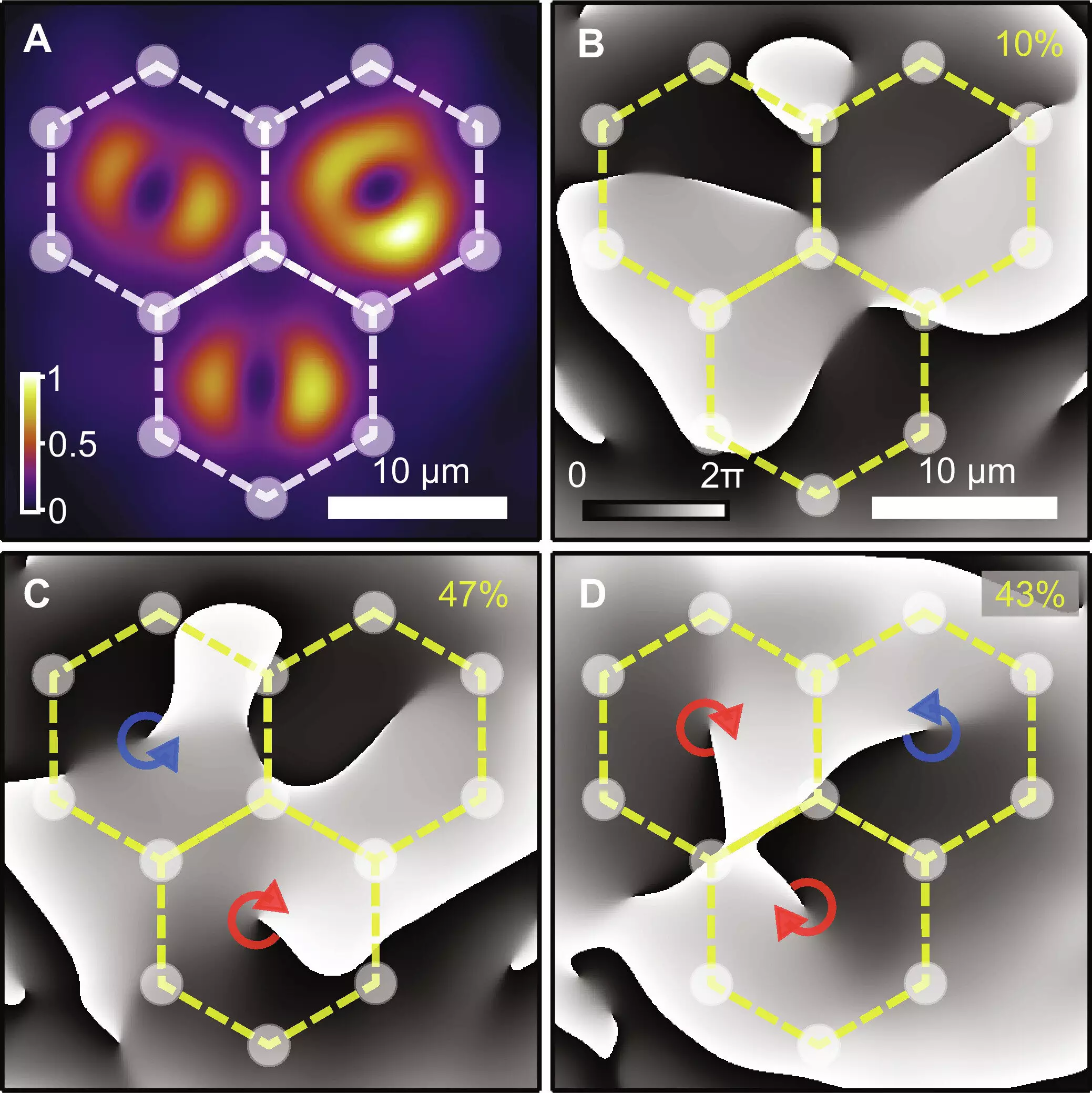Recent research conducted by a team of scientists from Skoltech, Universitat Politècnica de València, Institute of Spectroscopy of RAS, University of Warsaw, and University of Iceland has focused on the spontaneous formation and synchronization of multiple quantum vortices in optically excited semiconductor microcavities. The researchers discovered that polariton quantum vortices in neighboring cells of optically generated lattices exhibit antiferromagnetic coupling, with opposite topological vortex charges.
Experimental Setup
The scientists conducted their experiments at Skoltech, specifically in the Photonics Center’s Hybrid Photonics Laboratory under the leadership of Professor Pavlos Lagoudakis. They utilized a semiconductor planar microcavity composed of two highly reflective mirrors with InGaAs quantum wells in between, resulting in the formation of exciton-polaritons or microcavity polaritons under strong-light matter coupling conditions. By optically exciting the semiconductor microcavity sample with a patterned laser beam using spatial light modulation, they were able to create a triangular lattice with 22 cells containing trapped polariton condensates, each carrying a single-charge vortex.
Results and Analysis
The researchers observed that in a single cell, the trapped condensate exhibited almost equal probabilities for the vortex and antivortex states. However, in pairs of neighboring cells, the vortices interacted and formed stable solutions with opposite topological charges, forming vortex-antivortex or antivortex-vortex pairs. By expanding their study to a triangular three-cell structure and a larger triangular lattice of vortices, the scientists found evidence of extended antiferromagnetic order within the lattice. Theoretical analysis conducted by Dr. Helgi Sigurðsson from the University of Warsaw revealed significant correlations between the observed orbital angular momentum of the vortex lattice and low-energy solutions of the Ising spin Hamiltonian, indicating the presence of antiferromagnetic coupling.
The research conducted by the interdisciplinary team of scientists sheds light on the formation and synchronization of quantum vortices in semiconductor microcavities. By demonstrating the antiferromagnetic coupling of polariton quantum vortices in optically excited lattices, the researchers have opened up new possibilities for the study and simulation of condensed matter systems using artificial lattices of coupled vortices. The findings of this study pave the way for further exploration of quantum phenomena in driven-dissipative systems and offer insights into the behavior of quantum vortices in complex optical structures.


Leave a Reply